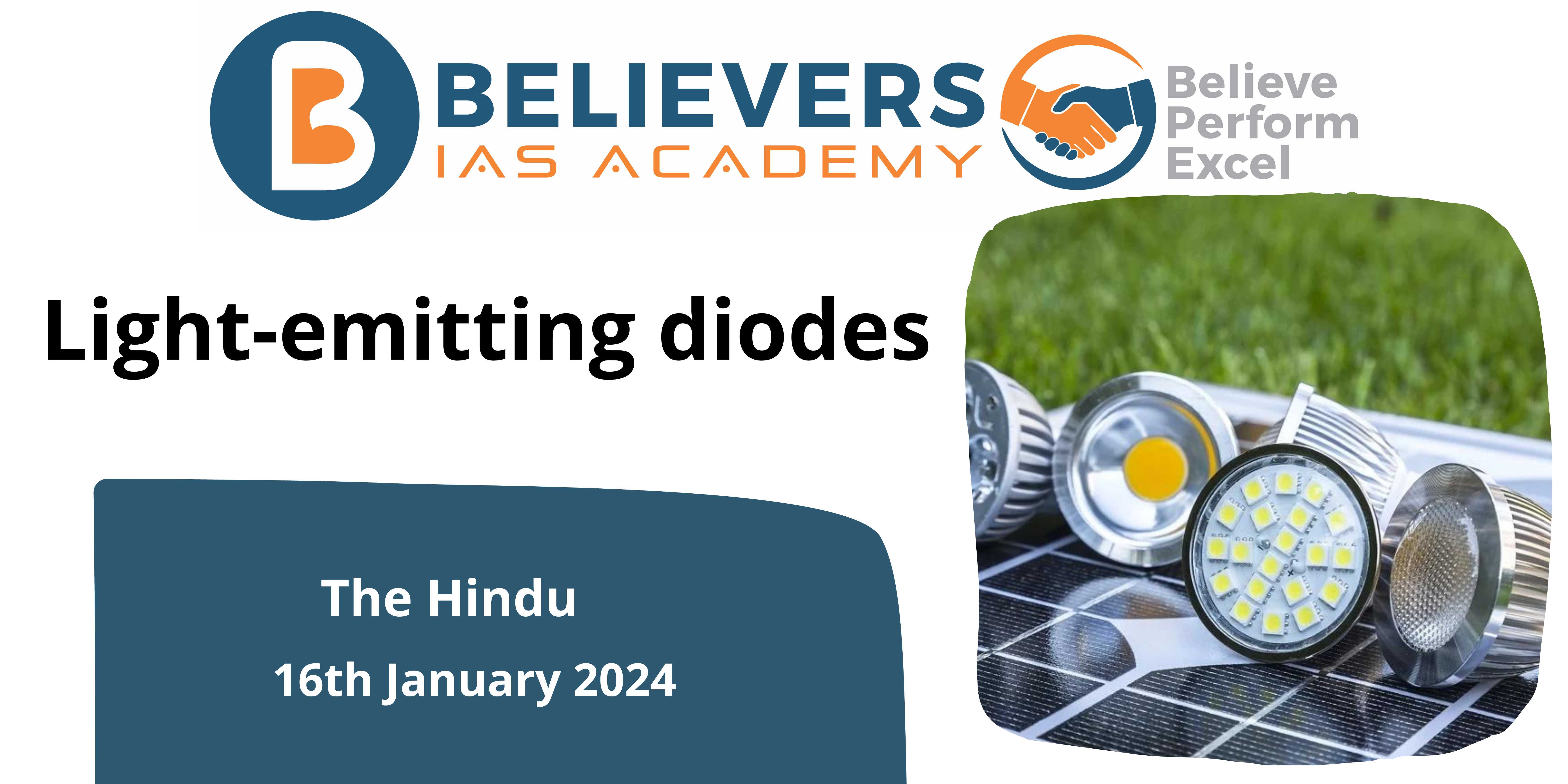Light-emitting diodes
Context:
The Nobel Prize in Physics in 2014 acknowledged the significance of light-emitting diodes (LEDs) as the lighting source for the 21st century.
Relevance:
GS-03 (Science and technology)
What are LEDs?
- Light Emitting Diodes (LEDs) belong to a category of semiconductors known as “Light Emitting Diode.”
- When current passes through an LED, the electrons recombine with holes emitting light in the process. LEDs allow the current to flow in the forward direction and blocks the current in the reverse direction.
- Light-emitting diodes consist of heavily doped p-n junctions. Depending on the semiconductor material and the level of doping, an LED emits light of a specific color at a particular spectral wavelength when subjected to forward bias.
- White LEDs, which became practically feasible with the development of high-brightness blue LEDs in 1993 utilizing Gallium Nitride, are garnering increased attention as a fourth type of light source.
How do LEDs Emit Light?
- LEDs, or Light Emitting Diodes, function as semiconductor light sources by combining a P-type semiconductor (with a higher hole concentration) and an N-type semiconductor (with a higher electron concentration).
- The application of a sufficient forward voltage induces the recombination of electrons and holes at the P-N junction, releasing energy in the form of light.
- In contrast to conventional light sources that first convert electrical energy into heat and then into light, LEDs directly convert electrical energy into light. This results in efficient light generation with minimal wasted electricity.
Types of LEDs:
There are two available types of LEDs:
- Lamp type (leaded)
- Chip type (surface mount)
- Users can choose the most suitable type based on their specific requirements.
Advantages of LED Lighting:
- Extended Lifespan.
- Enhanced Energy Efficiency.
- Positive Environmental Impact.
- Capability to Function in Cold Environments.
- Absence of Heat or UV Emissions.
- Flexibility in Design.
- Instant Illumination and Resilience to Frequent Switching.
- Operates at Low Voltage.




